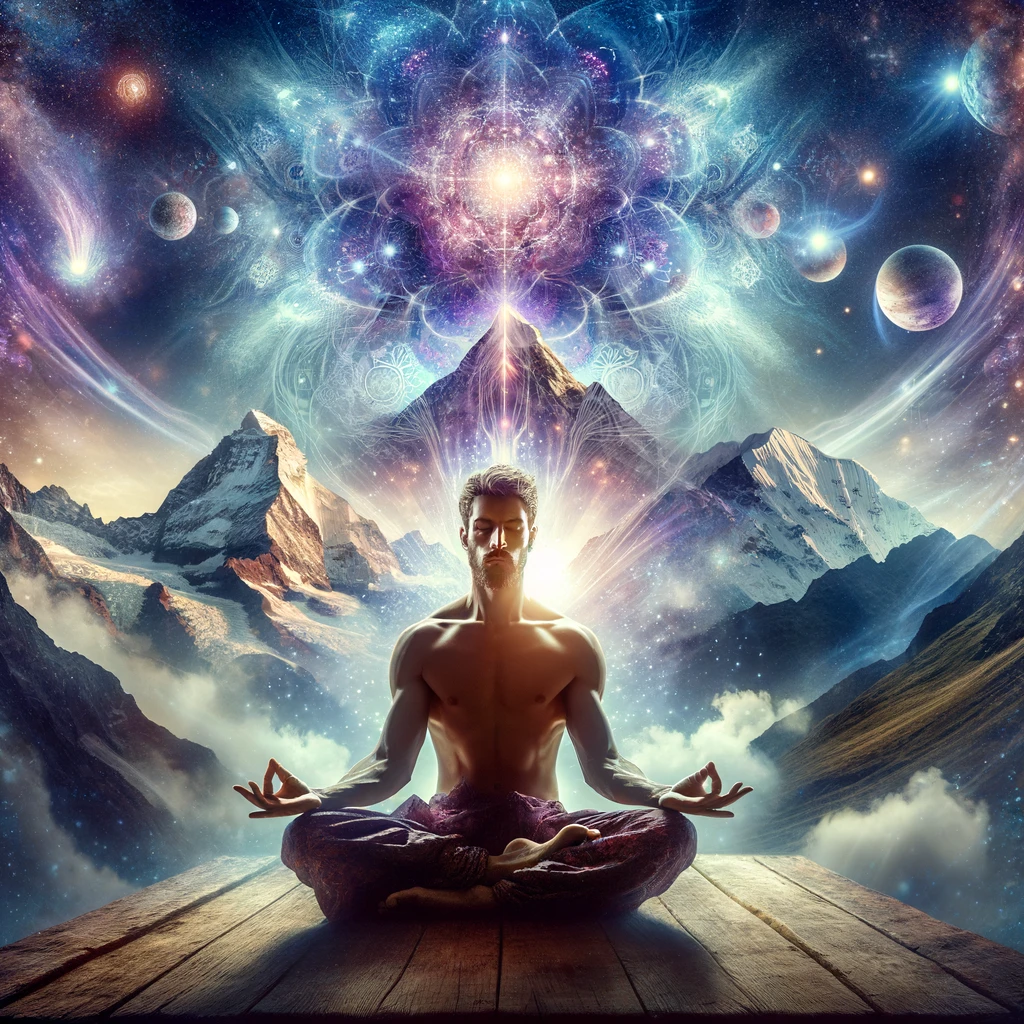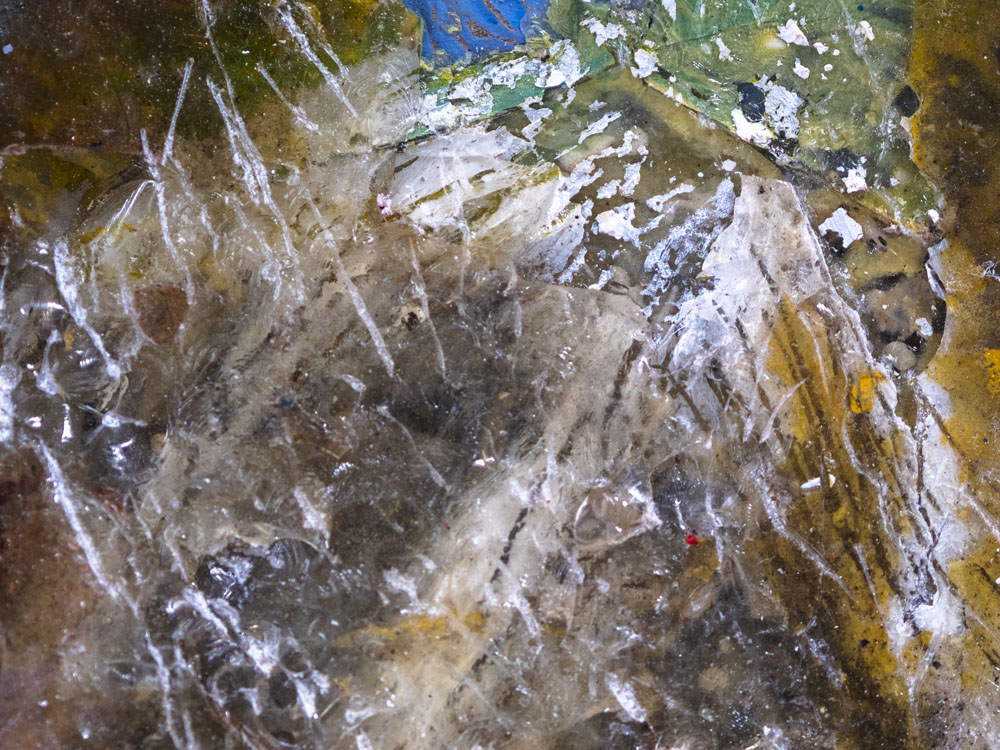Premise for the body of works
A homage to journeys taken as possibly a trek through the Himalayan region also known as the Eight-thousanders’. It about the perilous outcomes for those who venture past their limits. This piece’s focus is on the sense of adventure. As a photographic depiction on side A illustrates through experience of the riding a classic motor cycle along the winding roads is an exhilarating form of entertainment but with a profound sense of mystery as ancient relics and walkers emerge from now where.
Extra version
In the realm of Italozazen’s artistic odyssey, his latest series, a mixed media exploration, is not merely an artistic endeavor but a tapestry of life experiences and philosophical musings. This body of work, christened as a homage to journeys taken, particularly those through the formidable Himalayan region, reverberates with the ethos of Italozazen’s life as an artist, philosopher, and seeker. The Himalayas, or the “Eight-thousanders” as they are colloquially known, represent more than just a geographical marvel; they symbolize the zenith of human adventure and the precipice of existential exploration.
In this series, Italozazen delves into the perilous outcomes faced by those who venture past their known limits. This thematic strand is not alien to Italozazen, who himself, in his quest for artistic and philosophical enlightenment, has often treaded on the edges of conventional boundaries. His experiences, be it his traversing through the villages of India or his immersion into the depths of Classical Indian metaphysics, all echo in the fabric of this series.
The focus on adventure is captured in the vivid portrayal of a classic motorcycle journey along the serpentine Himalayan roads. This is not merely a photographic depiction on Side A of the series but a narrative that intertwines Italozazen’s own experiences and visions. The motorcycle ride, exhilarating and liberating, is a metaphor for Italozazen’s own life journey. The sense of mystery that envelops this segment of the series is reflective of Italozazen’s encounters with the unexpected and the profound during his travels. The ancient relics that appear, almost ethereal in their emergence, are reminiscent of Italozazen’s studies in philosophy and religion, suggesting a connection between the temporal journey and the metaphysical quest.
The walkers who emerge “from nowhere” in this narrative are symbolic of the transient nature of life and the fleeting encounters that shape our existential understanding. They are reflective of Italozazen’s own interactions with diverse cultures and philosophies during his travels, each encounter adding a layer to his artistic and philosophical identity.
This series, thus, becomes more than an artistic expression; it is a synthesis of Italozazen’s life as a seeker, a philosopher, and an artist. It encapsulates the peril and the beauty of venturing into the unknown, both in the physical realm of the Himalayas and the metaphysical journey of life. Italozazen, in his unique narrative style, infuses this series with a sense of adventure that is both thrilling and introspective, inviting the viewer to not only witness but partake in this journey of discovery and self-realization.
Emergent elemental forms
The view of the work from a distant is abstract. However though upon closer inspection figurines emerge. These have been intentionally created, or through serendipity, and attempt to capture the travel sense of dislocation that can happen on trips through the region. These works have a foundation in my earlier art practice around yogi forms that were developed as a way to explore variable states of endurance.

Some further thoughts
In analyzing the text provided for its artistic expressionism, particularly in the context of mixed media artworks, one discerns a profound and multifaceted approach. The phrase “Emergent elemental forms” itself is evocative of a process that is both organic and spontaneous, aligning well with the tenets of Expressionism, where emotional experience takes precedence over physical reality.
The initial description of the work as abstract from a distance but revealing figurines upon closer inspection suggests a layered approach to perception and understanding. This dichotomy between the distant abstract and the intimate figurine is emblematic of the journey from the outer to the inner realms of consciousness, a theme resonant in the works of Sri Aurobindo and mirrored in the philosophies of Wittgenstein, where the limits of language signify the limits of one’s world.
The mention of serendipity in the creation of these figurines points to a relinquishment of control, a key aspect of Expressionism. This aligns with the teachings in the Patanjali yoga sutras, which emphasize the surrender of the ego to achieve a higher state of being. The “travel sense of dislocation” mentioned in the text reflects a Nietzschean perspective of constant becoming, where the journey itself becomes a metaphor for existential transformation.
Furthermore, the foundation in earlier art practices around yogi forms suggests an evolution of the artist’s journey, much like the progression of thought in Bertrand Russell’s works. These yogi forms, developed as a means to explore variable states of endurance, resonate with the philosophy of mind, particularly in the context of understanding consciousness and its manifestations in art.
In enhancing the expressive elements of these mixed media artworks, one could further integrate symbols or motifs that represent the philosophical underpinnings of Classical Indian metaphysics and Western philosophy. For instance, incorporating elements that symbolize the cyclic nature of creation and destruction from the Rig Veda, or abstract representations of the mind’s labyrinth akin to the philosophical inquiries of Chalmers, could deepen the viewer’s engagement and interpretative experience.
In summary, these artworks seem to be a confluence of Eastern metaphysical thought and Western philosophical inquiry, manifesting in a visual form that challenges and entices the viewer to journey from the external abstract to the intimate, figurative essence. The artistic practice here is not merely a representation but a dialogue between the artist’s inner world and the outer reality, a journey that reflects the eternal quest for truth and understanding.
A mixed media four sided artwork.
A four sided multi media construct using fibreglass core with fabric prints, oil paint, marble, resin caste, photographic prints, lino cut sections, air dry clay, steel periphery and and wire. This practice began in 2008. The series of prints along the side depicts the dry tropical zone of Australia and its semi desert trails navigated with a motorcycle and bicycle too.
Trek is a work in progress.
The works have been in progress since 2018 with bibs and bobs added as a vision emerges along the line of a theme that covers a few pieces. It began as a material arts practice around 2006 and has gradually transformed but still includes marble as a feature within the works.
